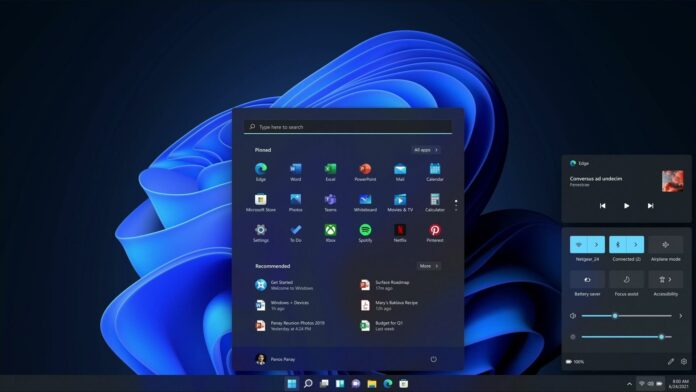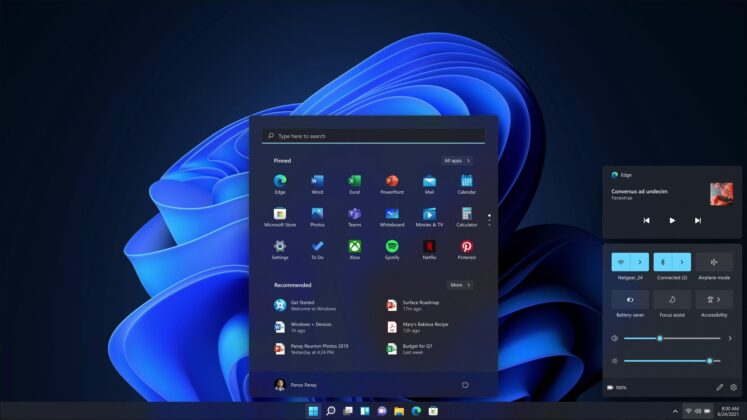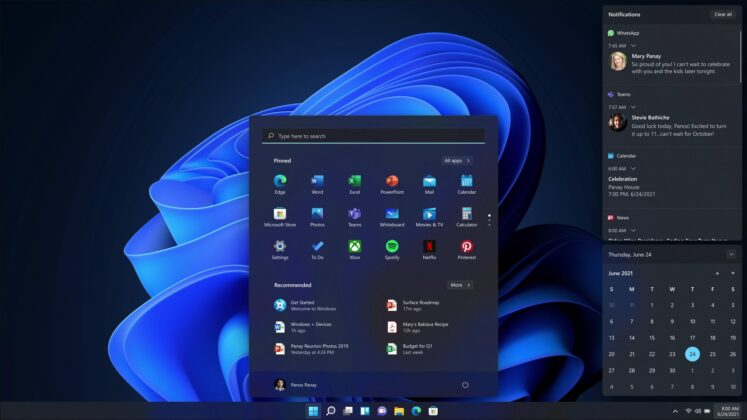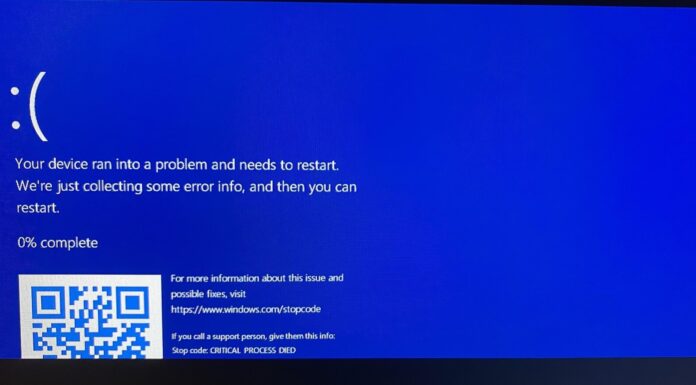As expected, Windows 11 is getting user interface elements that were originally planned for use in Windows 10X.
Microsoft has shelved development on Windows 10X and it’ll never arrive for consumers, but Windows 10X features are apparently coming to Windows 11, with several bits from 10X already present in the RTM build of the new OS.
While the system tray on the right is not going away with Windows 11, some of its features will now be shifted to the new Action Center. The Action Center, otherwise known as the notification center, has been completely redesigned on Windows 11 with WinUI and Fluent Design features, and it also comes with a new Quick Settings panel.
Action Center on Windows 11 looks very different from the Action Center we’ve currently on Windows 10. It uses a new “panels” design where your notifications and controls will be split up into different groups, with notifications being housed above the Quick Settings panel.
The Action Center is now resizable/adaptive, and it still comes with a “Clear all” button at the top right of the panel.
Like Windows 10, the new Quick Settings panel will offer quick access to commonly used settings. These controls include Bluetooth, Wi-Fi, Airplane/Flight mode, Battery saver, Focus Assist (a feature that turns off notifications so you can focus on work), as well as new controls for things like display brightness and volume.
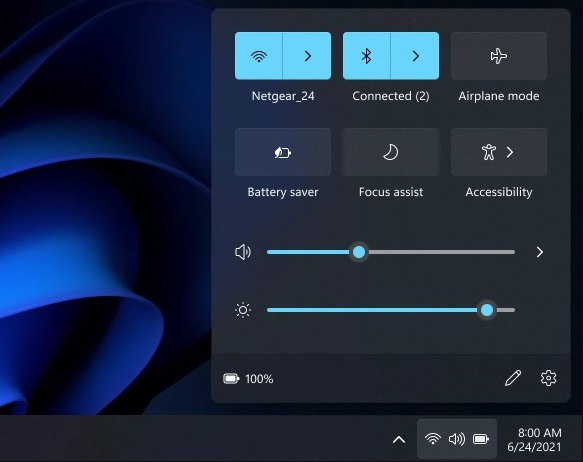
Overall, Windows 11 Action Center functionality remains unchanged, but the quick settings panel is now more customizable. For example, when you click on actions like Wi-Fi or Bluetooth, a new configuration pane will appear and you’ll be able to switch between different WiFi or Bluetooth connections directly from the Action Center.
Previously, these actions were redirected to Windows Settings app, but you can now configure them directly from within the notification center panel.
There are some neat touches in animation as well and it’s noticeable when you click on an action in the Action Center to enable the feature. For example, the Bluetooth icon changes slightly to acknowledge the click.
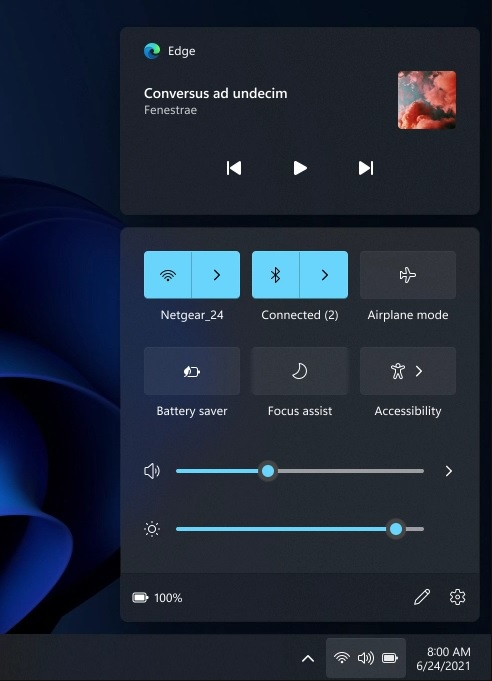
Another big change is support for the new music control panel, which will appear only when an app is playing audio. With the new music control, you can finally change track and pause/resume the audio content directly from Windows Action Center.
On Windows 10, this functionality is offered via dated music control UI.
As mentioned, the basic functionality of Action Center is not changing, which means you can still jump into the Settings app to further customize the experience and how notifications appear.
In addition to Action Center, Microsoft is also redesigning Windows Store, Windows Settings, File Explorer, Microsoft Photos and other areas of the operating system










